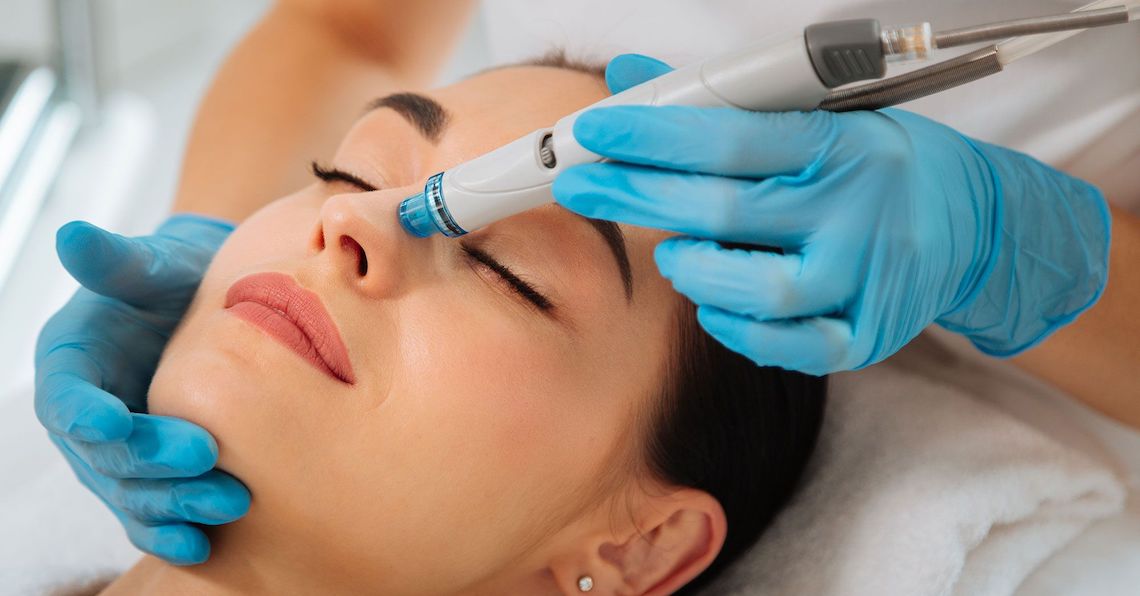The BeautyHealth Company, the maker and owner of the HydraFacial service, is ramping up a busy launch and expansion schedule.
Since March, BeautyHealth has been rolling out its latest HydraFacial device called Syndeo, which provides more data and personalization to Hydrafacial providers that will help better meet customer needs. On June 15, BeautyHealth introduced a new serum booster to use during HydraFacials with skin-care brand Murad. Additionally, on June 27, it released an LED light therapy service. And it plans to add a JLo Beauty brightening booster in September. HydraFacial’s business operates by selling $25,000 machines to dermatologists and medspas and its corresponding products to operate the machines. These rollouts are taking place while the company also explores acquisition opportunities in the beauty, aesthetics and wellness categories. BeautyHealth Company went public via a SPAC in May 2021 and acquired four international third-party distributors for HydraFacial in July of the same year.
BeautyHealth is placing a big bet on its Syndeo system to help transform the company in the future. HydraFacial expects Syndeo’s data to drive increased engagement and unlock a direct relationship with customers. The intention is to get every provider to use Syndeo starting in the U.S. and then globally, beginning in 2023. There are currently over 21,000 HydraFacial devices in use, in over 90 countries.
“The minute a consumer walks in the door, they expect and want you, as a business provider, to know who they are and what they need. Syndeo now allows us and our business partners to do that,” said Jwala Karnik, M.D., evp of global strategy and partnerships for BeautyHealth Company.
When Syndeo launched in March, BeautyHealth offered a 20-day trade-up promotion to providers to convert them to the new device. The “attractive yet profitable offer,” as Andrew Stanleick, CEO of BeautyHealth Company, described it during the company’s first-quarter earnings call, was targeted at providers that most recently purchased the previous device generation called Elite within the past 12 months.
So far, the response from providers has been enthusiastic. In the Americas region, first-quarter delivery system sales increased approximately 43% year-over-year to $44.6 million, due to Syndeo sales and strong sales productivity driven by conversion marketing tactics, according to the brand’s first-quarter earnings report published in May. BeautyHealth’s net sales for the quarter were $75.4 million, an increase of 59% year-over-year.
Karnik said that BeautyHealth Company has three broad audiences it’s trying to address with Syndeo: business owners, providers doing the treatments and consumers. For business owners, the connectivity of Syndeo allows the owner to track how many treatments are occurring, what kind of treatments are being requested and what the demand is for certain booster products. Providers can also better understand a clien’ts needs based on what they did during their last treatment, no matter which provider the person went to previously. The average HydraFacial customer visits just over three treatment providers per year. A typical HydraFacial service retails for about $250 per session. For consumers, there is a HydraFacial app they can download to receive information from a Syndeo device. Customers can input what their skin concerns are and have access to treatment history. But until Syndeo is more widely distributed in the U.S. and internationally beginning in 2023, BeautyHealth is not broadly marketing the app to customers.
Ad position: web_incontent_pos1
“When this rolls out internationally, we’ll be collecting millions of data points worldwide on what people are accessing,” said Karnik. “We’ll know what skin types are using which boosters, amd what’s being asked for at any particular time and place. We’ll get that real-time feedback and use it to invest in [product] innovation.”
But BeautyHealth’s long-term plans currently intersect with an uncertain time for the global economy. According to the U.S. Labor Department, U.S. consumer inflation accelerated to 9.1% in June, a pace not seen in more than four decades. And beauty brands, despite being historically regarded as recession-proof, are not immune to volatility. Inflation-driven price hikes and supply chain constraints have pushed companies like Revlon toward bankruptcy and some consumers to change their beauty habits. Though BeautyHealth has continued to grow sales consecutively quarter over quarter, its stock price experienced a 52-week low of $9.95 and a high of $30.17. It currently sits at $12.70 as of this reporting. Still, it’s full-steam ahead for the company.
“M&A remains a facet of our overall strategy. We maintain a prudent and disciplined approach to acquisitions,” Stanleick said during the company’s first-quarter earnings call. “There are three key criteria we are focused on. First, it needs to be a truly differentiated product or service with a high Net Promoter Score. Second, it should be complementary to our platform and community … and third, we are focused on financially accretive opportunities, ideally both for the top and bottom lines.”




